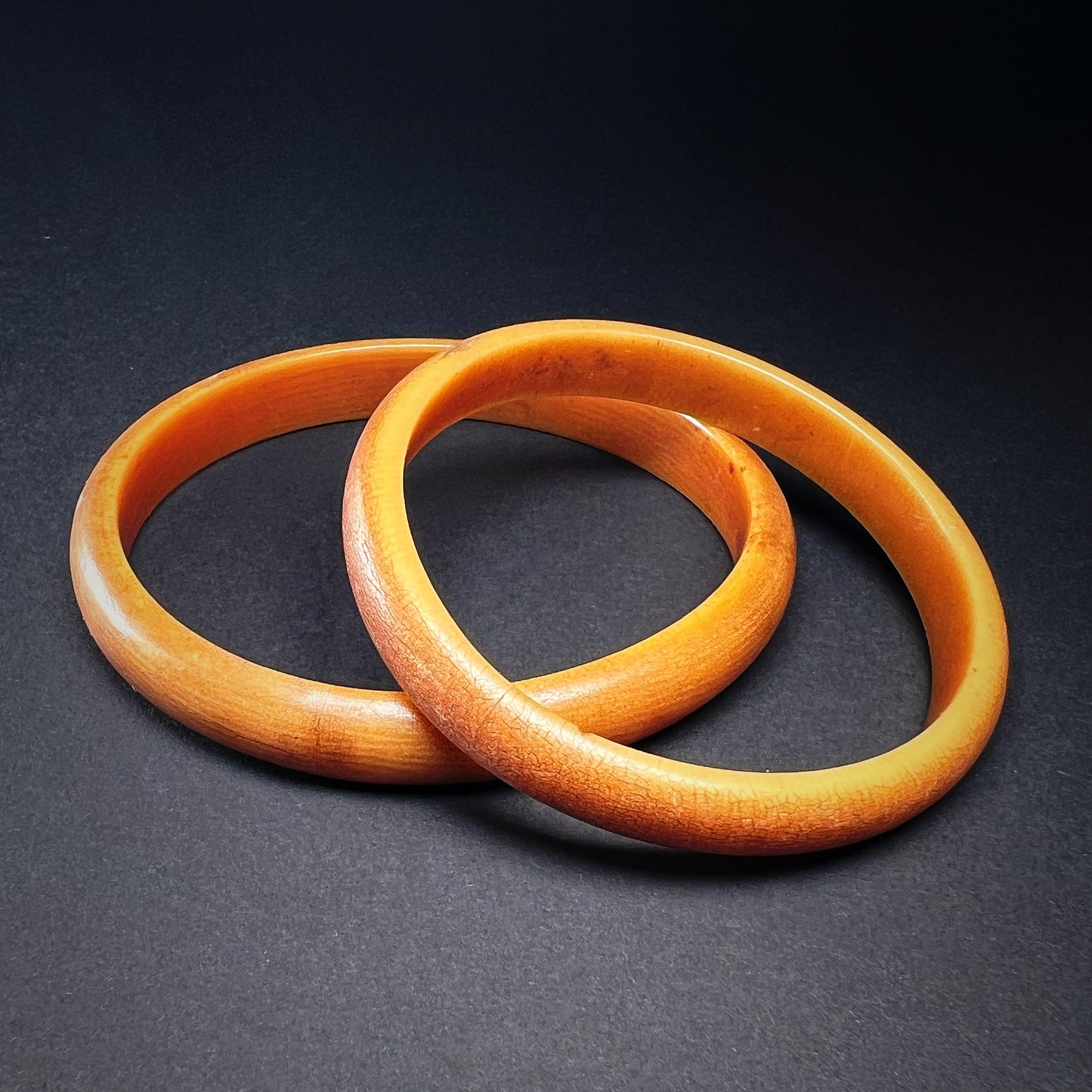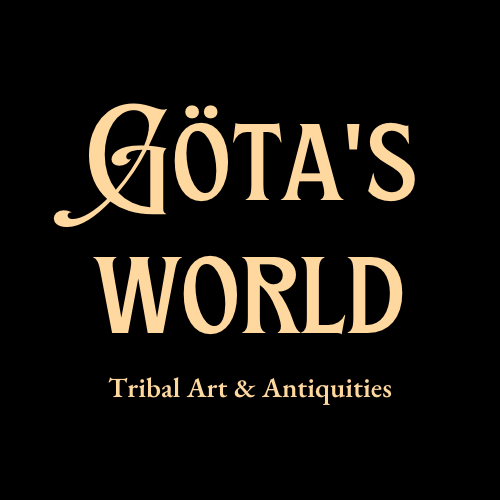Asmat Bracelet Pair
Asmat Bracelet Pair
Couldn't load pickup availability
Asmat people, early to mid-20th century, Manokwari, West Papua, Indonesia
A lovely pair of old bracelets made from an unidentified material—likely galalith, horn, or bone. Pieces of this type were often European-made and traded into Asmat regions in the early 20th century, possibly through Dutch missionaries. Such ornaments became incorporated into local dress and personal adornment.
The Asmat inhabit the swampy, river-laced lowlands of West Papua and comprise several closely related subgroups sharing a strong cultural identity. Their material culture draws heavily on the natural environment—timber for houses (tsyem), sago for sustenance, and forest and river resources for daily needs. Each village traditionally maintains at least one men’s house (jeu), which serves as a ritual and social center.
Renowned worldwide for their powerful woodcarvings, the Asmat were also known for once-practised traditions of warfare and headhunting, which remained integral to ritual life until their suppression in the mid-20th century. These customs, along with Asmat artistry, became internationally recognized following the 1961 disappearance of Michael Rockefeller, whose collecting expedition in the region drew significant global attention.
Excellent condition. Wear commensurate with age and use. Size approx. 7,8cm x 7,8cm x 1,1cm & 6,7cm x 6,7cm x 0,9cm.
Provenance: From a Dutch private collection; reportedly originally from the holdings of a now-closed ethnographic museum and foundation in the Netherlands.
References and further reading:
The Asmat Museum of Culture and Progress, Tobias Schneebaum, Cultural Survival Quarterly Magazine, December 1982.
Oceania, Encyclopedia of World Cultures, Peter and Kathleen Van Arsdale, ed. by Terence Hays, G.K. Hall & Company, 1991.
Asmat Art: Seventy years of Asmat woodcarving, Simon Kooijman, Pacific Arts Newsletter No.4, January 1977, pp. 9-11.
Art and Culture of the Asmat, Holmes Museum of Anthropology, Wichita States University, 2021.
Headhunting Practises of the Asmat of Netherlands New Guinea, Gerard A. Zegwaard, American Anthropologist New Series, Vol.61, No.6, December 1959, pp. 1020-1041.
"The Asmat", In Heilbrunn Timeline of Art History, Emily Caglayan, Ph.D., Department of Art History, The Graduate Center, City University of New York, The Metropolitan Museum of Art, 2000-, October 2004.
Savage Harvest: A Tale of Cannibals, Colonialism, and Michael Rockefeller's Tragic Quest for Primitive Art, Carl Hoffman, Publisher William Morrow, 2014.

-
Shipping
The shipment will be prepared in the course of 3-5 days and dispatched via Posti Group Oyj or purchased item(s) can be picked up from our shop during the store's opening hours (Tarkk’ampujankatu 4, 00140, Helsinki, Finland). Within the Finland, all items are shipped via Posti Group Oyj unless otherwise requested. We pack the items carefully and mainly in recycled materials because we want to save nature. You will receive the tracking number for your items by e-mail.
-
Returns
Returns and exchange will be accepted within fourteen days (14) of receipt at the purchaser’s cost to include freight and packaging. Items must be returned in the same condition as when they were shipped, and will not be accepted if damaged or altered in any way. Please inform us via email (info@gotanmaailma.fi) or by calling +358408408352 before sending. We do not accept returns more than 14 days after delivery.

